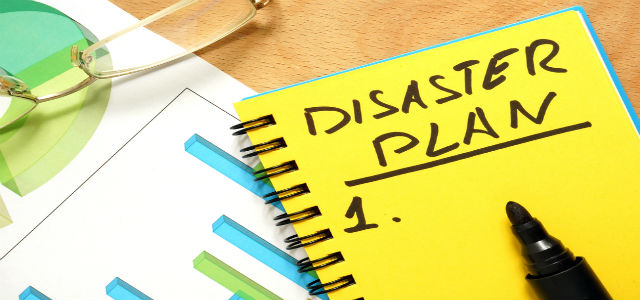Nobody likes to think that a disaster could befall them and, as a result, very few companies make adequate plans for one. As a consequence of sticking their heads in the sand, the businesses least prepared for the worst are the ones who are more likely to suffer, or even go out of business after a catastrophe.
You must therefore be prepared to devote some time and resources to an effective disaster recovery plan which will help you get back to ‘business as usual’ as quickly as possible. To get you started, here are our top 10 items to add to your checklist:
- Make sure you are taking regular backups – a frighteningly high number of companies do not even do this.
- Are you backing up all your data? As soon as you create new folders and files, you must ensure they are included in the backup.
- Do you backup often enough? You need to find out the tolerance of your company in terms of down time. If even one hour’s loss would have a catastrophic effect on your business, then maybe you need to arrange to backup your system more often than once an hour. Clearly, the more often you backup, the more costs you will incur, so it becomes a trade-off against the costs of backing up and the costs of losing business as a result of losing data.
- Choose the order in which your data should be recovered. In terms of your company’s survival, we like to use the metaphor of air, water, food and junk food. Categorise the type of data that is absolutely essential for the survival of your business – ‘air’ – and prioritise this to be recovered first. You can then grade the rest of your data in order of how much your business needs it to survive. Click here for an in-depth explanation.
- Do not backup what you do not need. Not all of the data on your system will be necessary for the running of your business. It is likely that staff members will have family photos on their computers – in survival terms they are ‘junk food’ that adds nothing to your business, takes up a lot of space and could end up wasting valuable time in terms of data recovery.
- Are your backups secure? Last year, global recruitment company Michael Page was hacked and the data of more than 700,000 candidates on its system was illegally accessed. As far as we understand it, the hackers breached the backup files that had not been encrypted. You must ensure that your backups are as security encrypted as the rest of your data.
- Are your backups safe? In physical terms, your backups must be kept offsite in case something happens to your building.
- Test backups regularly in order to be sure the data is recoverable. For instance, we do verification checks on a weekly basis, and full tests on a monthly basis.
- What does normal service look like? After a catastrophic disaster, do you have an idea what normal service will look like? For instance, do you know what hardware and platforms you would need to buy in order to restore your data properly? And do you have a software inventory? As part of your asset management, you will need to keep your software licence activation codes as well as the source code to be able to reinstall your software in order to access your recovered data.
- Training. Make sure your key staff are trained on your disaster recovery plan and know what they need to do in case it is needed.
If you would like us to help you with all aspects of your disaster recovery plan, call us on 01442 500890 to discuss your needs.

